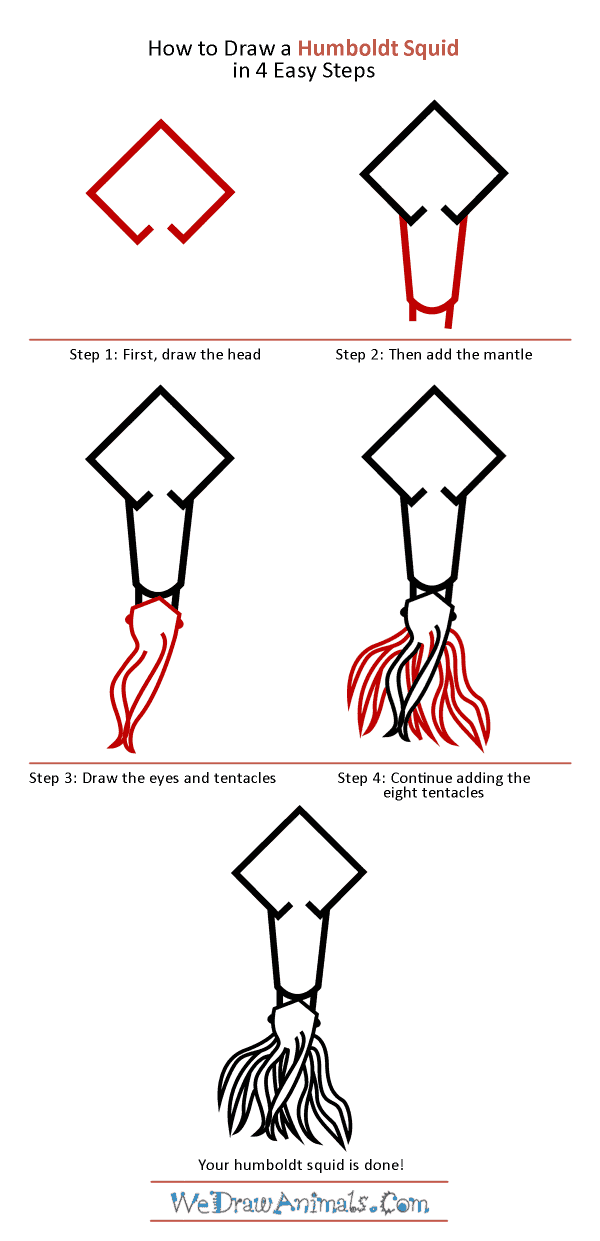In this quick tutorial you'll learn how to draw a Humboldt Squid in 4 easy steps - great for kids and novice artists.
The images above represent how your finished drawing is going to look and the steps involved.
Below are the individual steps - you can click on each one for a High Resolution printable PDF version.
At the bottom you can read some interesting facts about the Humboldt Squid.
Make sure you also check out any of the hundreds of drawing tutorials grouped by category.
How to Draw a Humboldt Squid - Step-by-Step Tutorial
Step 1: First, draw the head. Start with a square turned on its edge, like a diamond. Leave a gap at the bottom point and draw two small lines tapering into the square. This will be the fin at the top of the body.
Step 2: Then add the mantle, which is most of the main body of the squid and other mollusks. For this, draw two lines descending from the bottom of the fin and coming to a flat line, almost like a cup. Just under the bottom of the mantle, draw two short lines that will connect the head.
Step 3: Draw the eyes and tentacles. Start with two lines meeting below the mantle like the roof of a house, and then use long, smooth lines descending from that to show the face and two narrow tentacles. Don’t forget the eyes on the side of the head, which are very large on Humboldt squids and squids in general.
Step 4: Continue adding the eight tentacles. Draw these like the first two tentacles, waving in different directions and coming from the side and bottom of the head along with the front two.
Interesting Facts about the Humboldt squid
The Humboldt squid, also commonly known as the jumbo squid, is a type of large quid that can be found in parts of the eastern Pacific Ocean. These squids are one of the largest of all squids, growing to be around 1.5m in total length of their mantle.
Did you know?
- These squids, like many other squids of their family, are able to quickly change their color as a defense mechanism
- The Humboldt squid also has gained the name Diablo rojo, Spanish for red devil, because they are known to quickly flash red and white while they are hunting
- It is often found that these jumbo squids will live in large packs of squids, which are called shoals, which can be a collection of at least 1,200 Humboldt squids
- Jumbo squids are able to swim at speeds of 24km/hr by propelling themselves with the water that they eject through a large siphon and two triangular shaped fins
- These squids are known to be very aggressive to animals and humans alike, but some research is showing that they will generally be passive unless if they are feeding
- If food sources are low within a shoal, the Humboldt squid won’t hesitate to eat its younger members, which a type of cannibalism that is very rare among squids





